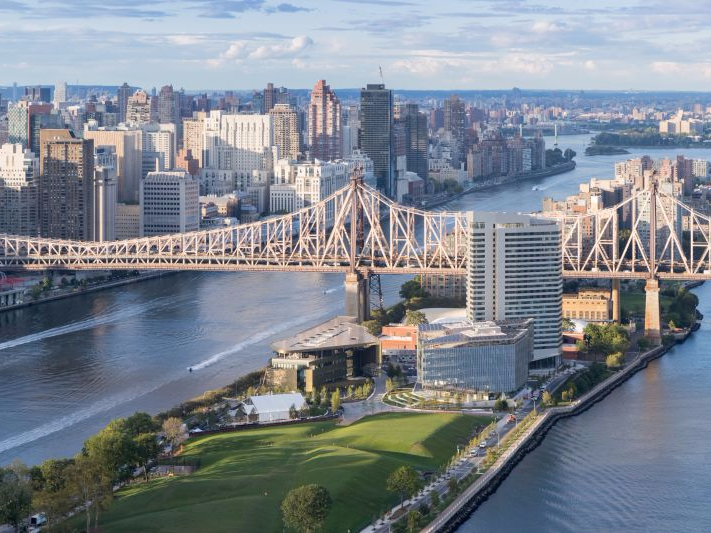Nestled between Manhattan and Queens on New York’s Roosevelt Island, a new approach to building design has come to life.
Cornell Tech, a two-million-square foot campus aimed at serving students studying computer science, business, and entrepreneurship, is open for the 2016-2017 academic year.
The buildings will remain in construction until approximately 2043, at which point some 2,000 students and hundreds of faculty and staff will live in energy-efficient buildings designed to heat and cool their inhabitants naturally.
Here’s what the school is like up close.
Cornell Tech’s main dorm, the tall building pictured in the background below, is the tallest and largest “passive” house in the world, meaning it uses little energy to heat and cool the interior.

Passive houses can use 70 to 90% less energy than traditionally built structures. The dorm will abide by a strict set of energy efficiency requirements established by Germany’s Passive House Institute.

The building is the largest energy-efficient dorm in the world.
The interior walls are covered in tape-sealed "jackets" that prevent outside air from coming in. Each window has triple-pane glass that was assembled in Italy and shipped to New York.
Pipes run around the ceiling, continuously emitting heat or AC into the room. Unlike traditional central heating and AC systems, which shut on and off to adjust the temperature, the pipes keep the inside temperature consistent and adjust in real time to save energy.
The other buildings in the campus also employ a passive design, including The Bridge. It's a co-working space for tech companies and researchers, who can collaborate to bring products to market more quickly.

The campus also includes a 196-room hotel and a learning center, where students can move between individual work and team-based projects. The building was designed to produce more energy than it uses over time.

Steelblue and Forest City Ratner Companies designed the interior and helped picked startups and more mature companies to fill the space. All will do work involving technology in some capacity.

Similar to the exterior, where there are no walls, gates, or barriers, inside the buildings students and faculty enjoy an open-plan design that encourages airflow throughout.

The views of Manhattan are a nice perk, too.

All told, the campus has received $683 million in funding from New York City, Michael Bloomberg, Charles Finney, and Irwin and Joan Jacobs.

Now that the campus is up and running, researchers will have even more data to analyze on the long-term cost-effectiveness of passive buildings.

It doesn't hurt that the 12-acre campus adds a splash of green to the world's most famous concrete jungle.


